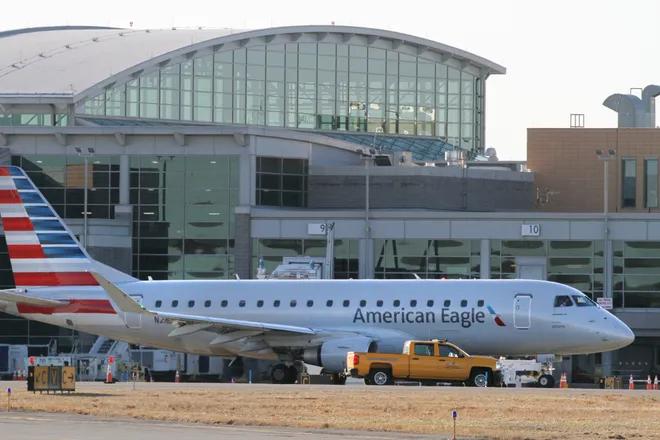Renowned travel magazine Conde Nast recently announced their Reader’s Choice picks for the top 10 airports in the world, with Rhode Island’s own T.F. Green International Airport just barely cracking the list at the number 10 spot.
According to Rhode Island Airport Corporation President and CEO Iftikhar Ahmad, “This honor recognizes the hard work of all of those committed to excellence at our airport. In the coming years, we expect that our new restaurants, retail shops, and terminal renovations will help further boost our rankings as we strive to provide the best passenger experience possible.”
Really?
I mean, don’t get me wrong, I like T.F. Green as much as the next person, but that’s about where the praise ends. It just seems like an average airport to me, however as a native Rhode Islander, there may be a little bias in that statement.
From what the article talks about, it appears that T.F. Green earned the honor due to its accessibility and being a “great little airport that’s easy to reach and to navigate, with more than two-thirds of New England’s population living within a 75-minute drive to the airport.”
That’s great and all, but I have a Trader Joe’s that’s within a 75 minute drive of my house, but that doesn’t make it the 10th best Trader Joes in the United States.
Sure, I understand accessibility is a factor that should be considered when ranking airports, as many are located within heavily populated areas, such as Chicago O’Hare, Logan International in Boston and JFK just to name a few. But to say T.F. Green is ‘more accessible’ than all of these and ranking it in the top 10,in the world,without considering other factors just seems like an unfair statement.
First, we need to consider the size of the airport. JFK Airport in New York has 8 terminals, sits on an area of land that measures 8 square miles and processes 60 million passengers yearly on average. T.F. Green, on the other hand, has just one terminal and sees roughly 2.9 million visitors each year, roughly 4.8% of JFK’s capacity.
Next, we need to look at the space within the airport itself, specifically how far travel distance is within the terminals. Dallas Fort Worth International Airport faces the longest concourse travel distance in the US, with approximately 2.16 miles of hallways between Terminals B and E. In T.F. Green, if it weren’t for an inconveniently placed ramp right next to the Starbucks, you could probably stand at one end where if you squint really hard, see which Southwest flight is leaving from the opposite end of the airport.
Finally, we need to look at the flights traveling through the airport, and the variety and options that are available. Hartsfield-Jackson International Airport in Atlanta, which holds the honor of being the busiest airport in not just the U.S. but the world, handled over 725,000 flights from 23 different airlines in 2022, which averages to roughly 2,700 flights a day. T.F. Green, in just the month of September in 2023, handled 3,373 flights from only nine different airlines.
Now for those who may think that this information is skewed by comparing two airports of vastly different sizes, allow me to introduce an alternative that is a similar size to T.F. Green, in the form of Bradley International Airport in Hartford, Connecticut. In 2022, Bradley handled 82,837 operations using 14 different airlines. To clarify for those who are thinking these statistics are superior to T.F. Green, Bradley is not anywhere to be seen on the Conde Nast rankings, while T.F. Green was.
While the airport’s ranking has since been replaced with Indira Gandhi International Airport in India, the argument and uproar from not only citizens of other airports but from Rhode Islanders as well will not be forgotten anytime soon. So the next time I’m at T.F. Green, and I am waiting in line for 45 minutes at 6:30 AM at one of four Dunkin Donuts all located within a 20 second walking distance in the same terminal. I’ll think to myself, ‘hey, at one point we were top ten in the world’ and that’s pretty cool.





